How we are doing a children's lesson about programmers and broadcast programming
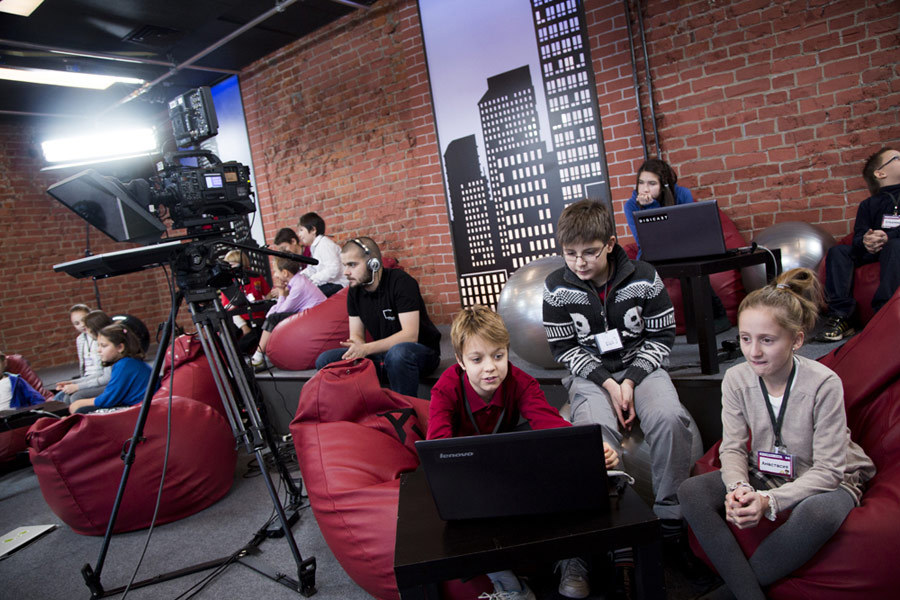
Test run
In a post about the problems of children's education, I promised to show the history of preparation for the first lesson. This is a lesson about programming and programmers. The first one is because without IT it’s nowhere. Because children have long been living in a digital world in which we are simply immigrants.
It all started with the fact that at Digital October we worked closely with the scientific and technological community, and there were no problems with inviting lecturers from all over the world (from Tungsten to key people from Yandex). Then we decided to do a good, good children's educational program. A series of lessons was supposed to merge school knowledge into synthesis.For example, that designers need biology, and so on. It had to be a video in order to interest children, and then books, applications, circles in cities - so that children later develop.
After the success of the "adult" KnowledgeStream, I decided to make a program for children in a similar format. We found internal resources without sponsors, only with friends we did a pilot lesson about the human skeleton with a professor of medicine, an anthropologist, a robot engineer (who came with a robot) and a living astronaut. Plus kids online.
Even before shooting the pilot, I talked with Google for a long time, the Russian office really liked the idea, the project was supposed to be bilingual and international. PR Director Alla gave a lot of practical advice and helped as much as she could. Unfortunately, it was not possible to agree with Google due to age restrictions on the company's social services, most of which belong to the category 14+. And this already imposed the need for a complete revision of the concept.
Another children's project (about it below) we took to the Moscow Government. Our contact was very competent, I myself became interested in our project, made an appointment in record time. Everything went quickly and clearly. He was well versed in the topic of education, he knew about our other projects. We have almost secured the support of the Moscow Government, the project wasset aside. It was necessary to start everything from the very beginning, but there was no time - we just launched the Russian Kurser.
About the first lesson
To begin, I’ll tell you a little more about the pilot with a human skeleton.
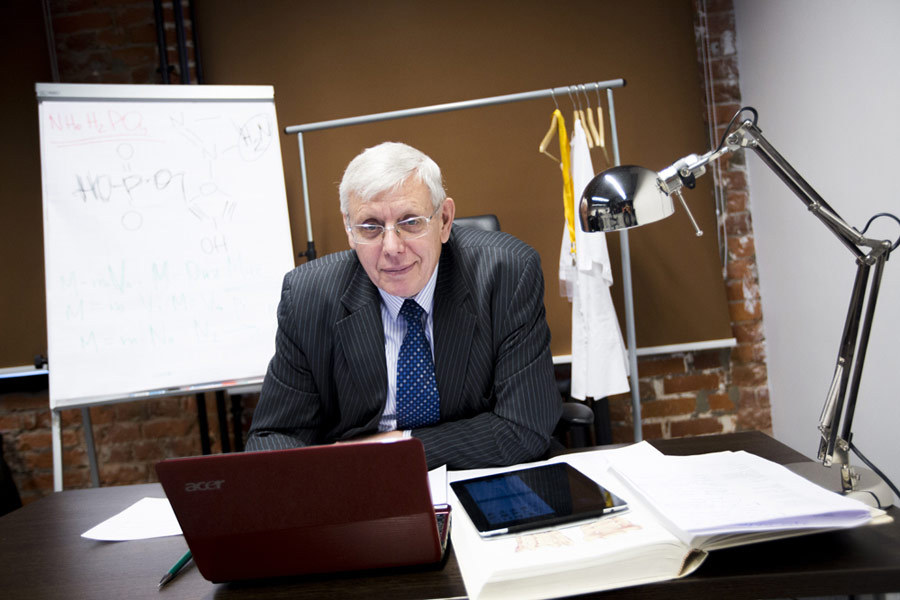
The lesson went like this: Oleg Stefanovich Medvedev, a professor of medicine from Moscow State University, told why the skeleton was needed at all, gave the children a task to find on the Internet and show exercises that support the spine in shape. Denis Pezhemsky, an anthropologist, explained that scientists can learn from excavations. Roman Zhukov, a robot engineer, showed similarities and differences between the human skeleton and the robot, and in general about how engineers use their knowledge of the human device in their work. And he brought a robot that the children didn’t let out at all for a long time after the shooting. Alexander Ivanovich Lazutkin, an astronaut, very interestingly told about space, how in the conditions of weightlessness the skeleton and muscles are seriously affected, and that you need to play sports, told that it’s cool to exercise on a stationary bike, and you can see the ground running under you through the window. I was surprised that birds in zero gravity do not survive: chicks cannot feed. The astronauts had eggs with them, they brought out the chicks, but they did not survive, they could not eat.
Here's what happened:
Here is what we wanted in the long run:

Another project
In parallel, we tried the project “My business” - excursions to different companies. At first we walked along the same Digital October with the children of the preschool group. The children were just wildly delighted, then every parent called me again and asked what we did with them. Everyone wanted to be cameramen, engineers and directors and work only with us. From that moment I realized that something needs to be done with this, too.
The plan was this:
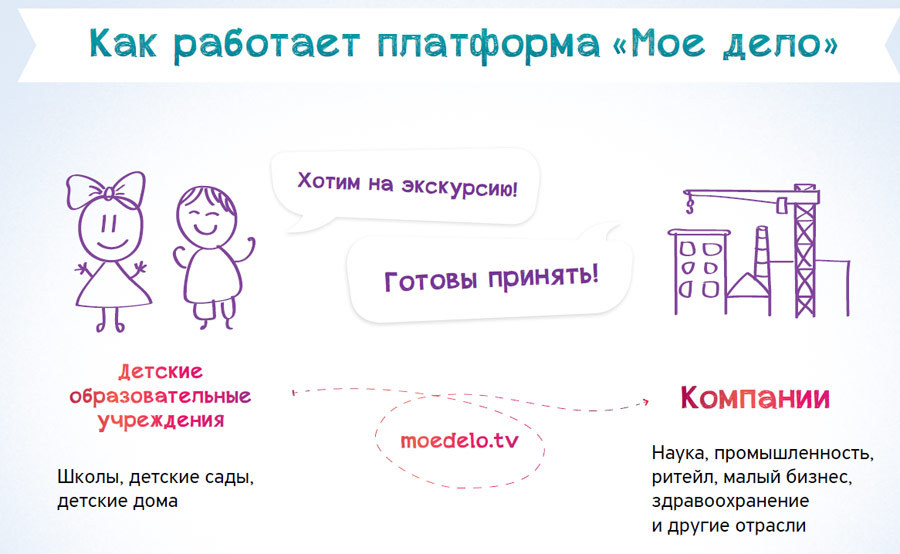
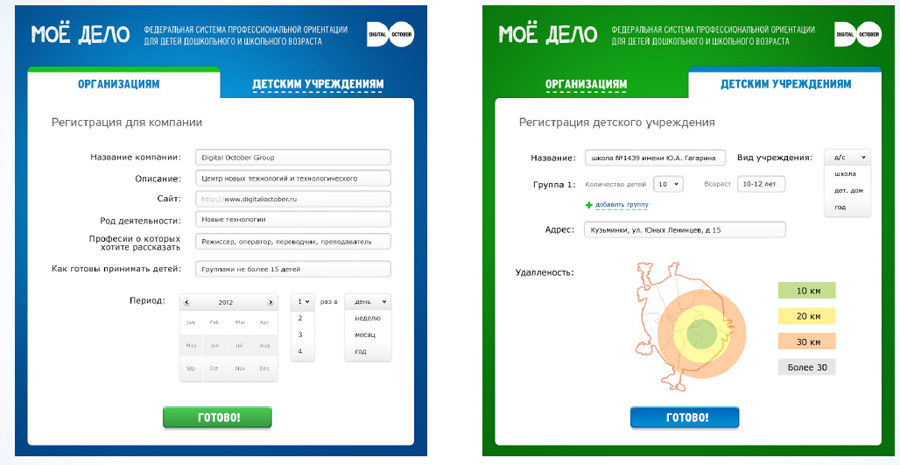
I wanted to bring all this to autonomy after the 50 first excursions, so that schools themselves found enterprises and vice versa, people made videos themselves, etc.
Let me remind you, we could not afford to focus on children - it was necessary to support this adult education:
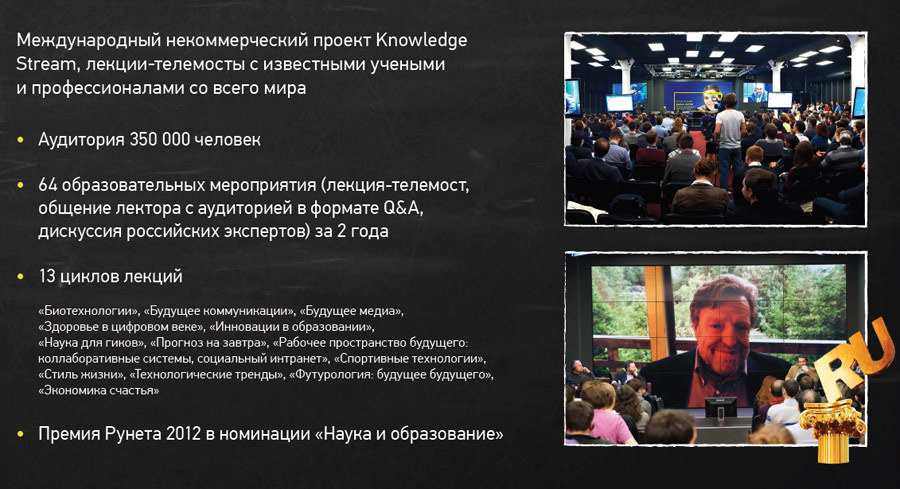
Plus, there was a Russian Kurser.
Last year, I completed projects with Kurseru, Digital October, Knowledge Stream, left all work and decided to deal only with children's education. We founded NPOs, but even NPOs needed investments. They were given by the co-founder of Uniteller, a man who initially supported Post-Science. Now he is engaged in the development of children's education - inlearno.ru and znanika.ru projects.
First lesson about programmers and programming
Now what we did for the first broadcast. The first step is to gather experts. We began to actively seek partners among those involved in schooling.
- We got acquainted with codabra.org, Dima Lokhansky , a cloud coder, one of the founders of Oversan-Skalaksi, a good person. The desire is to teach children not only to code, but to own tools of the digital environment and do what they really love - to draw cartoons, make games, and more. He wants to make a volunteer movement out of this thing, so that coders spend an hour a week learning children in simple schools. They already have followers in Penza and beyond. We made the first lesson with him at school, recorded it on video so that it would be easier for Kodabra volunteers to conduct their events. Here's what happened:
- Then there was Grisha Kondakov from Yandex,one of the founders of SHAD. He makes a math app for beginners (and a few other subjects in the school curriculum) that quickly and effectively teaches children to snap school examples like nuts. Moreover, it is so cool that my daughter Vera washed all the dishes at home, so I allowed her to “play” him further. Grisha is already experimenting in schools in Astrakhan and Moscow, plans to develop the product in the direction of the platform with the ability to compose authoring training programs based on the provided templates. At the EdCrunch conference, we conducted an open lesson with elementary school children using this technology. This is an excellent tool for personifying the educational process, the teacher has his own interface through which everything that the student does is visible: from the correct decisions to the time spent on the tasks. You can, for example,
- It is planned to cooperate with a school in Montenegro, which make distance learning English for elementary schools based on ordinary school subjects. The program is certified by Cambridge. In fact, this program will allow the child to know English at a fairly decent level, sufficient for learning in the language. But this is not all, the founder of the school is not just a director (this is not a business for him, but rather an opportunity to control and make the process of teaching his children effective), but a data scientist engineer. He himself developed a system that allows you to combine data from all schools that study and pass uniform exams on the Cambridge system- and you have the opportunity to see the progress of the child throughout the course of education + his position in comparison with all children from all over the world (the Cambridge grading system is one of the most used in elementary school around the world) or you can just see data on how your child correlates with the average level of passing an exam in Canada, India or Bulgaria. Education with them will be paid, 5 hours a week remotely, face-to-face meetings with children and their parents are supposed to maintain contact and communication. Children are 6-8 years old. Renewal plans to support this project at the experiment stage, we will help organize a group, provide offline classes. If you are interested, leave a mail, we will contact you when we have settled all the details and will start recruiting for the first free test group.
- Mosigra joined with her experience in developing games and psychological developments in the last year of studying the cognitive processes of children. You have already seen the game " Taxi "; it will be in a very shorter form at the lesson.
So, here is the result so far:
- The leader is a bobuk from Yandex.
- First, Yandex will talk about the profession of a programmer as a whole, career options, what interesting tasks are, where you need strength. Simple and understandable to children and their parents, who call the system unit processor.
- Games from Mosigra.
- Dima Lokhansky, Kodabra - showing a short video about a lesson at school. He will tell about his experience and what he does in the framework of Kodabra.
- At some point, we realized that we have only men in our speakers. And we decided to find the best coder girl. Will be Anna Melekhova, Leading Parallels Programmer.
- We give a link to the site for additional materials. There are manuals, books, a list of interesting pre-educational institutions by city, children's educational applications, foreign courses, online schools and so on.
Plus, we are now negotiating with various “just developers” about short speeches. This week we will have several “runs” with speakers, and a dress rehearsal. So there may be changes in the script.
Why all this, why and how - I told a little earlier, in a post about the problems of children's education in Russia . A little more details about the first lesson are here .
